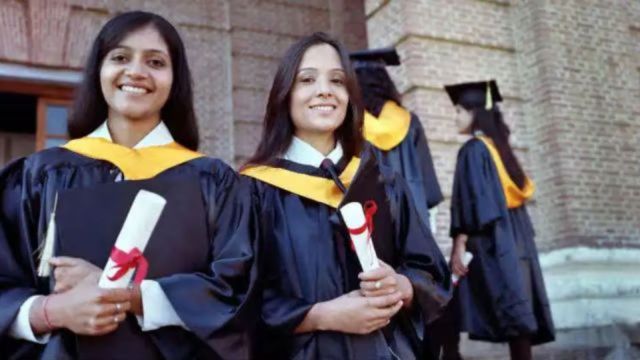
The number of Indian students choosing to study in the United States has increased significantly in recent years with the US becoming the second nation after Canada with the highest number of Indian students.
According to US embassy sources, in 2023, the US Mission to India issued more student visas than in 2018, 2019, and 2020 combined. Specifically, 1.40 lakh student visas were issued to Indian students in 2023 for various American universities, both public and private. This year, the number is expected to rise even further.
MoS External Affairs Kirti Vardhan Singh, during the recently concluded monsoon session, shared data in response in Rajya Sabha regarding the government’s record of students going abroad for studies.
According to the data, of the 13,35,878 Indian students studying abroad this year, 4,27,000 were studying in Canada, and 3,37,630 were in the US, which accounts for over 25% of the total Indian students abroad. These figures highlight the growing appeal of the US as a premier destination for international students.
What is driving students to the US?
Consultants attribute the surge to several factors, including the US’s welcoming approach towards international students and frequent changes made by other countries in their international student visa rules.
With over 4,000 educational institutions offering primarily four-year degree courses, the US presents a vast array of opportunities for students. Several of these institutions do not require IELTS, though students must demonstrate proficiency in English. US officials are also organising several events in India to attract students.
“The US has always been viewed as a land of opportunities or an earning heaven,” says Gurpreet Singh, a Kapurthala-based consultant specializing in study abroad opportunities, primarily for Canada, the US, and Europe. “There is a huge craze among students to go to the US from Punjab. With the US actively encouraging the influx of international students in recent years, it’s no surprise that Indians are seizing the opportunity,” he adds, noting that US officials are now organising several educational events in India to make aspiring students aware of the various educational opportunities in the US. This trend has picked up in the past couple of years in Punjab.
Gurpreet added that this shift is driven by changing conditions in other destinations such as Canada, which was a top choice for Indian students till last year. Also Canada is becoming increasingly expensive from an accommodation point of view and is strict with its visa policies. The US visa success rate for Indian students has increased manifold, from 15-20% earlier, he added.
“In contrast, the US offers more affordable accommodations, fewer housing issues, and less harsh weather compared to Canada,” said a student who recently obtained a US visa to study in a New York-based university. He added that for students, the process begins with selecting a college and receiving an I-20 form. Once they clear their visa interview, they can travel to the US without needing to pay tuition fees upfront. Payment can be made upon joining the college.
Form I-20s are “Certificates of Eligibility” for F-1 visa status. This form shows the US government that a student is eligible to apply for an F-1 student visa based on their documented funds and academic record. After receiving an I-20, the student may schedule an appointment for a visa interview at the closest US Embassy or Consulate.
Unlike Canada, which offers Permanent Residency (PR) after completing studies and a minimum of three years of work experience, the US does not offer PR after completing studies. But still the US is becoming a top choice. In the US, students are granted a one-year stay-back period, during which they can search for jobs. “If they secure employment, they can apply for an H-1B visa, which allows them to stay in the US long-term based on their job,” says consultant Sunil Kumar.
“Students are smart and they find a way to stay in the US even after completing their studies. Even after completing their studies in Canada, several students try to settle in the US,” said another consultant.
With the success rate of US student visas improving significantly, more students from India, particularly Punjab, are considering the US over other countries. “The rules in Canada have changed, and students are increasingly concerned about their prospects there. When they weigh the benefits of studying and potentially working in the US, many are finding it a more attractive option,” said Gurpreet.
